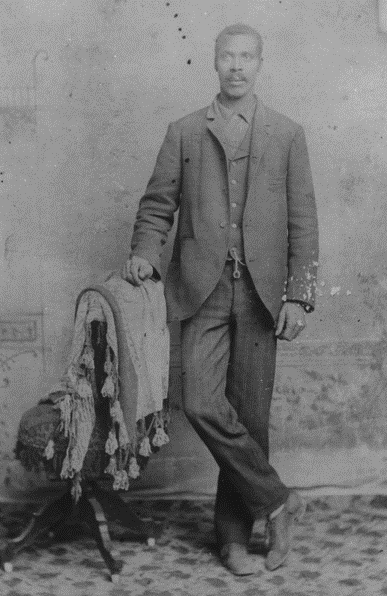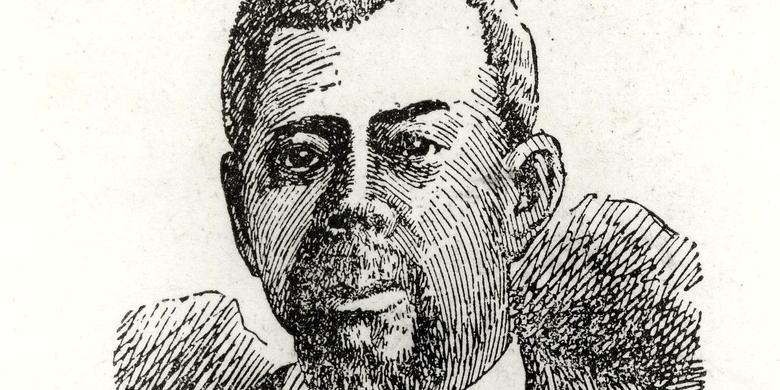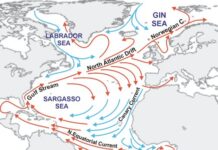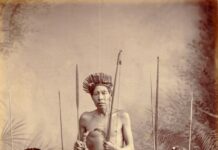The Misguided Focus on 1619 as the Beginning of Slavery in the U.S. Damages Our Understanding of American History
In 1619, “20. and odd Negroes” arrived off the coast of Virginia, where they were “bought for victualle” by labor-hungry English colonists. The story of these captive Africans has set the stage for countless scholars and teachers interested in telling the story of slavery in English North America. Unfortunately, 1619 is not the best place to begin a meaningful inquiry into the history of African peoples in America. Certainly, there is a story to be told that begins in 1619, but it is neither well-suited to help us understand slavery as an institution nor to help us better grasp the complicated place of African peoples in the early modern Atlantic world. For too long, the focus on 1619 has led the general public and scholars alike to ignore more important issues and, worse, to silently accept unquestioned assumptions that continue to impact us in remarkably consequential ways. As a historical signifier, 1619 may be more insidious than instructive…
Most obviously, 1619 was not the first time Africans could be found in an English Atlantic colony, and it certainly wasn’t the first time people of African descent made their mark and imposed their will on the land that would someday be part of the United States. As early as May 1616, blacks from the West Indies were already at work in Bermuda providing expert knowledge about the cultivation of tobacco. There is also suggestive evidence that scores of Africans plundered from the Spanish were aboard a fleet under the command of Sir Francis Drake when he arrived at Roanoke Island in 1586. In 1526, enslaved Africans were part of a Spanish expedition to establish an outpost on the North American coast in present-day South Carolina. Those Africans launched a rebellion in November of that year and effectively destroyed the Spanish settlers’ ability to sustain the settlement, which they abandoned a year later. Nearly 100 years before Jamestown, African actors enabled American colonies to survive, and they were equally able to destroy European colonial ventures…
There is also suggestive evidence that scores of Africans plundered from the Spanish were aboard a fleet under the command of Sir Francis Drake when he arrived at Roanoke Island in 1586. In 1526, enslaved Africans were part of a Spanish expedition to establish an outpost on the North American coast in present-day South Carolina. Those Africans launched a rebellion in November of that year and effectively destroyed the Spanish settlers’ ability to sustain the settlement, which they abandoned a year later. Nearly 100 years before Jamestown, African actors enabled American colonies to survive, and they were equally able to destroy European colonial ventures.
These stories highlight additional problems with exaggerating the importance of 1619. Privileging that date and the Chesapeake region effectively erases the memory of many more African peoples than it memorializes. The “from-this-point-forward” and “in-this-place” narrative arc silences the memory of the more than 500,000 African men, women, and children who had already crossed the Atlantic against their will, aided and abetted Europeans in their endeavors, provided expertise and guidance in a range of enterprises, suffered, died, and – most importantly – endured.” Smithsonian Magazine
The Love of Joseph Smith
Secondhand Account Mary Frost Adams, December 1906
“While [Joseph was] acting as mayor of the city, a colored man named Anthony was arrested for selling liquor on Sunday, contrary to law. He pleaded that the reason he had done so was that he might raise the money to purchase the freedom of a dear child held as a slave in a Southern State. . . . Joseph said, ‘I am sorry, Anthony, but the law must be observed, and we will have to impose a fine.’ The next day Brother Joseph presented Anthony with a fine horse, directing him to sell it, and use the money obtained for the purchase of the child. (Mary Frost Adams, “Joseph Smith, the Prophet,” Young Woman’s Journal, December 1906, as quoted in Hyrum L. Andrus, Joseph Smith, the Man and the Seer (Salt Lake City: Deseret Book, 1960), 33.)
Green Flake
Green Flake was born in January 1828 in Anson County, North Carolina. He was the Slave of James Madison Flake, a Southerner who converted to the Church. Green was given to James and Agnes Love Flake by James’s father, Jordan Flake as a wedding gift. He took the last name of his master and was known thereafter as Green Flake. He was baptized a member of The Church of Jesus Christ of Latter-day Saints at the age of 16 in the Mississippi River by John Brown on April 7, 1844, but remained a slave. He accompanied the Flake family to Nauvoo, Illinois.
From family diaries and the memory of a grandson, it is believed that was Green who drove the carriage and team that brought President Brigham Young into the Salt Lake Valley.
Brigham Young had Flake freed in 1854. Flake died a faithful member. (Margaret Young was the source of much of the information on this page.)http://www.blacklds.org/flake
Indentured Servitude of Whites in British America
Indentured servitude in British America was the prominent system of labor in the British American colonies until it was eventually supplanted by slavery.[1] During its time, the system was so prominent that more than half of all immigrants to British colonies south of New England were white servants, and that nearly half of total white immigration to the Thirteen Colonies came under indenture.[2] By the beginning of the American Revolutionary War in 1775, only 2 to 3 percent of the colonial labor force was composed of indentured servants.[3]
The consensus view among economic historians and economists is that indentured servitude became popular in the Thirteen Colonies in the seventeenth century because of a large demand for labor there, coupled with labor surpluses in Europe and high costs of transatlantic transportation beyond the means of European workers.[4][5] Between the 1630s and the American Revolution, one-half to two-thirds of white immigrants to the Thirteen Colonies arrived under indentures.[6] Half a million Europeans, mostly young men, also went to the Caribbean under indenture to work on plantations. Fraud and sometimes even force were widely used as methods of recruitment.[7] A debt peonage system similar to indenture was also used in southern New England and Long Island to control and assimilate Native Americans from the 1600s through the American Revolution.[8] Wikipedia
https://www.pbs.org/opb/historydetectives/feature/indentured-servants-in-the-us/
Slavery and Abolition
When the Church was organized in 1830, there were two million slaves in the United States—about one-sixth of the country’s total population. For three centuries, women and men had been kidnapped or taken as war captives in Africa and shipped across the Atlantic, and European Americans came up with various justifications for enslaving them and their posterity. In 1808, the United States banned the transatlantic slave trade, but the status of slaves already in the country and their descendants was a matter of continuing debate.
Slavery was gradually abolished in the Northern States in the late 1700s and early 1800s, including in the early Latter-day Saint centers of New York and Ohio. In the Southern States, including Missouri, slavery and the domestic slave trade continued. Many Americans supported slavery. Of those who opposed it, some focused on limiting the spread of slavery, some hoped to see it gradually end, and some—an outspoken few known as abolitionists—called for a more immediate and unconditional end to slavery. Because the exaggeration of racial differences was common in early American social, scientific, and religious thought, even many abolitionists advocated returning black Americans to Africa rather than integrating them into American society.
Though most early Latter-day Saint converts were from the Northern States and were opposed to slavery, slavery affected Church history in a number of ways. In 1832, Latter-day Saints who had settled in Missouri were attacked by their neighbors, who accused them of “tampering with our slaves, and endeavoring to sow dissentions and raise seditions amongst them.” That winter, Joseph Smith received a revelation that a war would begin over the slave question and that slaves would “rise up against their masters.” The next year, concerns that free black Saints would gather to Missouri was the spark that ignited further violence against the Saints and led to their expulsion from Jackson County.
In the mid-1830s, the Saints tried to distance themselves from the controversy over slavery. Missionaries were instructed not to teach enslaved men and women without the permission of their masters. The Church’s newspaper published several articles critical of the growing abolitionist movement. After the Saints had been driven from Missouri and had settled in Illinois, however, Joseph Smith gradually became more outspoken in his opposition to slavery. He asked how the United States could claim that “all men are created equal” while “two or three millions of people are held as slaves for life, because the spirit in them is covered with a darker skin than ours.” As a U.S. presidential candidate in 1844, Joseph called for the federal government to end slavery within six years by raising money to compensate former slaveholders.
By the time the Saints migrated to Utah, there were both free and enslaved black members of the Church. Green Flake, Hark Lay, and Oscar Crosby, members of the vanguard 1847 pioneer company, were enslaved to Mormon families at the time of their pioneer journey. [See information below about each of them]. In 1852, Church leaders serving in Utah’s legislature debated what to do about black slavery in Utah Territory. Brigham Young and Orson Spencer spoke in favor of legalizing and regulating slavery, allowing enslaved men and women to be brought to the territory but prohibiting the enslavement of their descendants and requiring their consent before any move. This approach would guarantee the eventual end of slavery in the territory. Apostle Orson Pratt gave an impassioned speech against any compromise with the practice of slavery: “[To] bind the African because he is different from us in color,” he said, “[is] enough to cause the angels in heaven to blush.” Young and Spencer’s position prevailed, and the legislature authorized a form of black slavery that demanded humane treatment and required access to education.
During the 1850s, there were about 100 black slaves in Utah. In 1861, the Civil War broke out in the United States over the question of slavery, as Joseph Smith had prophesied. On June 19, 1862, the United States Congress ended slavery in U.S. territories, including Utah. The next year, U.S. president Abraham Lincoln signed the Emancipation Proclamation, declaring that the U.S. government no longer recognized slavery in the rebelling Southern States. After the war, a constitutional amendment prohibited slavery throughout the United States.
Church Resources
“Letter to Oliver Cowdery, circa 9 April 1836,” Historical Introduction, in Brent M. Rogers, Elizabeth A. Kuehn, Christian K. Heimburger, Max H Parkin, Alexander L. Baugh, and Steven C. Harper, eds., Documents, Volume 5: October 1835–January 1838. Vol. 5 of the Documents series of The Joseph Smith Papers, edited by Ronald K. Esplin, Matthew J. Grow, and Matthew C. Godfrey (Salt Lake City: Church Historian’s Press, 2017), 231–36.
Joseph Smith’s Views on the Powers and Policy of the Government of the United States (Salt Lake City: Jos. Hyrum Parry, 1898).
Jonathan A. Stapley and Amy Thiriot, “‘In My Father’s House Are Many Mansions’: Green Flake’s Legacy of Faith,” Pioneers in Every Land series, Feb. 19, 2014, history.lds.org.
“Race and the Priesthood,” Gospel Topics Essays, topics.lds.org.
Bibliography
The following publications provide further information about this topic. By referring or linking you to these resources, we do not endorse or guarantee the content or the views of the authors.
David Eltis and David Richardson, Atlas of the Transatlantic Slave Trade (New Haven: Yale University Press, 2010).
William Mulligan and Maurice Bric, eds., A Global History of Anti-slavery Politics in the Nineteenth Century (New York: Palgrave Macmillan, 2013).
https://www.churchofjesuschrist.org/study/history/topics/slavery-and-abolition?lang=eng
“In My Father’s House Are Many Mansions”
Green Flake’s Legacy of Faith
On April 7, 1844, Joseph Smith arose at his final General Conference and delivered what many believe to be his greatest sermon. His topic, the relationship of man and God, transformed the understanding of members of the restored church. That same day, John Brown, a missionary in Mississippi, noted in his diary that “we ordained two elders the same day, brother James M. Flake & Washing[ton] N. Cook. I also baptized two black men, Allen & Green, belonging to Brother Flake.” 1
Green was born into slavery on the Jordan Flake plantation near Wadesboro, Anson County, North Carolina, in the mid-1820s. Later, Jordan’s son, James Madison Flake, took Green to Mississippi to help colonize the land being vacated by the forced relocation of the Five Civilized Tribes. It was in Mississippi that James, his wife, Agnes Love Flake, and their slaves met Elder Benjamin Clapp and joined The Church of Jesus Christ of Latter-day Saints.
The Flake household traveled first to Nauvoo, Illinois, then on to Winter Quarters. When the first company of Saints left for the Rocky Mountains, three convert families from Mississippi sent their slaves ahead with the vanguard pioneer company. The slaves, Green Flake, Oscar Crosby, and Hark Lay (later Wales), were to prepare homes for the families at their destination.
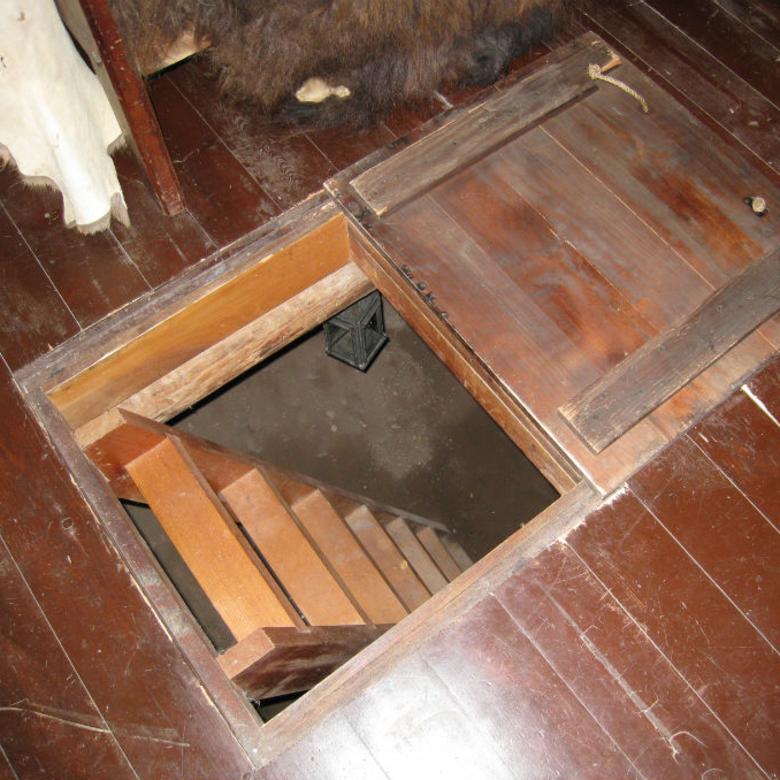
Although references company members made to the black men traveling with them were not particularly enlightened, the men were a vital part of the pioneer trek. When Brigham Young lay ill at the head of Emigration Canyon, he sent Green and others ahead to prepare the road. Green drove the first wagon into Emigration Canyon, and when Young arrived in the valley, Green had already planted crops. When James and Agnes Flake arrived in the Salt Lake Valley in October 1848, they found that Green had built them a comfortable log cabin in the South Cottonwood area of the Salt Lake Valley.
James soon passed away, and three years later the widowed Agnes and her three young boys went to settle San Bernardino, California. Agnes took her slave, Liz, with her, but left Green in the Salt Lake Valley. Several years later, as Agnes was dying, she had Amasa Lyman write to Brigham Young to ask him to sell Green Flake to raise funds for her family. No sale took place; Green may have considered himself freed when James Madison Flake died in 1850.
Green Flake married Martha Crosby, the daughter of Vilate Crosby and half-sister of Hark (Lay) Wales and Oscar Crosby. While still a slave, Martha had been baptized along with members of the Crosby family in Mississippi about the same time Green was baptized. Green and Martha had two children, Lucinda and Abraham. Green remained in an area of the Salt Lake Valley known as Union for most of the rest of his life. He farmed his land and was involved in mining ventures with Martha’s family members, Hark Wales and Miles Litchford. Green was an active member of the Union Ward.
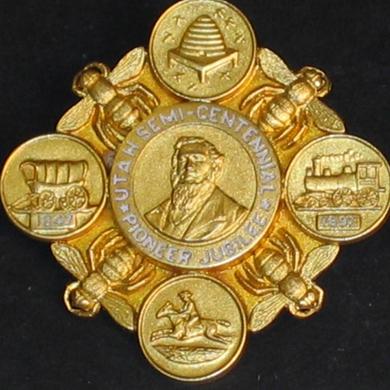
As the years wore on, Green became a popular speaker at Pioneer Day celebrations. During the 1894 celebrations, “Green Flake … made an interesting address, stating that he was proud to be of that honorable and honored body [of 1847 Pioneers].” In 1896, Green moved to Gray’s Lake, Idaho, to be near his children and grandchildren, but returned to Salt Lake City in 1897 for the Jubilee Pioneer Day celebration. A newspaper account described the surviving pioneers and proclaimed that “one of the most interesting of these old-timers was Green Flake, the only colored survivor of the band of ’47. Green is a vigorous, broad-shouldered, good-natured, bright old gentleman, long a resident of Salt Lake County, but now living at John Gray’s Lake, Idaho. He wears glasses, but that is the only sign of old age about him. His voice might do for a trumpet, and he steps off like a West Pointer when he walks.”
Green passed away in 1903. The Deseret Evening News said at the time of his death that “Bro. Flake had reached the honorable age of 76, which means, to all who knew him, 76 years of honest, hard work for the betterment of humanity, and for an exaltation in his Father’s kingdom.”
“Bro. Flake had reached the honorable age of 76, which means, to all who knew him, 76 years of honest, hard work for the betterment of humanity.” The Deseret Evening News
Sixty years earlier, when Green joined the church, a black seventy named Elijah Abel had just returned from a mission, and members of the Quorum of the Twelve were promoting Joseph Smith’s proposal to free all the slaves in the United States. Not long after Green arrived in the Great Basin, however, church leaders began to exclude black men from the priesthood, a change that also limited black members’ access to the temple.
Despite this change, Green lived out his life in full faith. He carved a gravestone for his wife that he ultimately shared with her in the Union Cemetery. Above his name is etched in now weather-worn and barely legible text: “In my Father’s house are many mansions.” This invocation echoed the sentiments Joseph Smith preached the day Green was baptized: “There [are] many mansions in my father’s Kingdom. What have we to console us in relation to our dead? We have the greatest hope in relation to our dead of any people on earth. We have seen them walk worthy on earth and those who have died in the faith are now … gone to await the resurrection of the dead, to go to the celestial glory.”Jonathan A. Stapley and Amy Thiriot
Footnotes
[1] John Brown, Reminiscences and Journals, April 3-7, 1844, p. 27, microfilm of holograph, MS 1636, LDS Church History Library.
[2] Census records placed Green Flake’s birth between 1825 and 1828. His gravestone states 1828. Newspaper articles at the time of his death noted that he was 76 years old, which would indicate a date of 1826 or 1827. Near the end of his life Green noted that he was “Born in north Car[o]lina, ” at “mads burr” [probably Wadesboro], Anson County, North Carolina. Green Flake, Reminiscences, in Utah Semi-Centennial Commission, The Book of the Pioneers [ca. 1897], quoted in Mormon Pioneer Overland Travel, 1847–1868.
[3] “Fifty Years Ago Today,” Salt Lake Tribune, May 31, 1897, 1.
[4] “More Pioneers,” Deseret News, July 19, 1897, 2.
[5] “The Veterans’ Reunion,” Salt Lake Herald, August 21, 1894, 8.
[6] “The Opening Day of the Jubilee,” Salt Lake Tribune, July 20, 1897, 1.
[7] “Died,” Salt Lake Herald, October 23, 1903, 8.
[8] “Union. Funeral of Green Flake. Aged Colored Pioneer Laid to Rest Honored and Respected by All,” Deseret Evening News, October 31, 1903, 9.
[9] Andrew H. Hedges, Alex D. Smith, and Richard Lloyd Anderson, eds., Journals, Volume 2: 1842-1843 in The Joseph Smith Papers, ed. Dean C. Jessee, Ronald K. Esplin, and Richard Lyman Bushman (Salt Lake City: Church Historian’s Press, 2011), 197 and 212; General Smith’s Views of the Powers and Policy of the Government of the United States (Nauvoo Ill.: John Taylor, 1844), 7.
[10] “Union. Funeral of Green Flake. Aged Colored Pioneer Laid to Rest Honored and Respected by All,” Deseret Evening News, October 31, 1903, 9.
[11] Joseph Smith, Sermon, April 7, 1844, Wilford Woodruff report, Andrew F. Ehat and Lyndon Cook, eds., Words of Joseph Smith: The Contemporary Accounts of the Nauvoo Discourses of the Prophet Joseph (Provo, Utah: BYU Religious Studies Center, 1980), 347; cf., Thomas Bullock report, ibid., 354.
https://history.churchofjesuschrist.org/article/green-flake-pioneer?lang=eng

Elijah Abel
“A ready and willing Abel • What about Elijah Abel, who was ordained to the LDS priesthood by Mormon founder Joseph Smith in 1836, and soon rose to the office of Seventy and became one of the leading elders of the church at the time?
Abel served at least four Mormon missions and contributed generously to the building of the Salt Lake Temple, but was never allowed inside for its sacred rituals.
“It is tempting to partition Abel off from mainstream Mormon history as a token black man who happened to hold the priesthood,” Stevenson says. “But if you want to understand LDS history, Elijah Abel is as representative as any other early white Latter-day Saint.”
Not to be forgotten was Jane Manning James, a freeborn black woman who converted to Mormonism in 1839, traveled West with the Saints and tried repeatedly to be allowed into an LDS temple.
Jane Manning James

James was “sealed” to founder Smith and his wife Emma as a “servant” and, then, posthumously to her own children.
“Our stories are just as inspiring as all the other ones,” Vranes says. “How do we tell the story about Eliza Lyman almost dying on the trail and leave out the part about how a black woman gave Eliza half her flour? Saved her life?”
White Mormon feminists almost “deify Eliza R. Snow,” an early convert, poet and longtime female leader in the church, Vranes says, but Snow held racist views just like her contemporaries.
In one of Snow’s poems, she suggests that “the (*black see editor’s note below) people are cursed,” Vranes says. “So some group’s heroes are not everyone’s heroes.”
Maybe one day, she says, Mormon feminists will understand why “I don’t necessarily want a silhouette of Eliza Snow on my T-shirt.”
But the real history of LDS blacks also reveals how unusual Mormonism was, Vranes and Smith say.
Abel not only worshipped alongside white Mormons, but also preached to them and led them at a time when most black and white Americans were not allowed in the same congregation. James addressed the mostly white, all-women Relief Society, a feat almost unheard of in the rest of the nation.
Black people, Smith says, “have always been an important part of Mormon history.” Maybe now that rich past will live in the present.” Salt Lake Tribune 2014 Black Mormon pioneers — a rich but forgotten legacy of faith.
Heroes and Heroines:
Green Flake—Black Pioneer By Jane McBride Choate

Forced by mob persecution to leave their homes in Nauvoo, Illinois, many members of The Church of Jesus Christ of Latter-day Saints decided to go westward to find a new home. The next year, 1847, under the direction of President Brigham Young, they moved to the Great Salt Lake Valley, Utah. The first pioneer colony to arrive at the valley numbered one hundred forty-three men, three women, and two children. Among these first settlers was Green Flake, a former slave of a North Carolina planter, who had been converted earlier to the Church.
Born in Anson County, North Carolina, in 1825, Green was inherited by Madison Flake after his father’s death. As was the custom of the time, Green took the surname of his master. After Madison Flake joined the Church, he offered Green his freedom. However Green chose to remain with Madison, and he moved to Nauvoo with the Flake family. In Nauvoo Green served for a short time as one of the Prophet Joseph Smith’s bodyguards.
Madison asked Green to go with the first wagon train of Saints to help prepare for the subsequent arrival of the Flake family. Life was hard for all of the pioneers. Green proved himself strong and reliable as the small group of men set up winter quarters in Nebraska, made a trail along the Platte River to Fort Laramie, Wyoming, in the spring, and found a way through the Rocky Mountains.
President Young became ill with a fever when they arrived at Echo Canyon, which cut through the eastern slopes of the Wasatch Range eighty kilometers from the Great Salt Lake. He sent Orson Pratt ahead with a company of forty-two men, instructing them to build bridges and roads as they went. Green Flake was included in this group, which pushed on and reached the Great Salt Lake Valley 21 July 1847. He rode in the first wagon to move through Emigration Canyon into the desert valley, later called by Brigham Young “the Promised Land.”
Orson Pratt immediately dedicated the land to the Lord and blessed the seed that they had carried with them over a thousand miles. He then ordered the first crops to be planted. Green Flake plowed the earth and sowed his share of the seed before building a log house for the Flake family. He had chosen a site that the Flakes could live near the Southern Saints who had come west with the Mississippi Company.
When Madison Flake arrived a year later, he found a beautiful home ready for his family. At this time, Green was only twenty-two years old. Shortly afterward Green married Martha Crosby, and they had two children. After his wife died in 1885, Green went to live near his son and daughter in Gray’s Lake, Idaho. He returned to Salt Lake City in 1897 to attend the Jubilee Pioneer Celebration and to receive a special certificate for being one of the first pioneers to enter the valley. He died six years later in Gray’s Lake at the age of seventy-eight. https://www.churchofjesuschrist.org/study/liahona/1989/06/green-flake-black-pioneer?lang=eng
“Before closing this communication, I beg leave to drop a word to the traveling Elders. You know, brethren, that great responsibility rests upon you; and that you are accountable to God, for all you teach the world. In my opinion, you will do well to search the Book of Covenants, in which you will see the belief of the Church, concerning masters and servants. All men are to be taught to repent; but we have no right to interfere with slaves, contrary to the mind and will of their masters. In fact it would be much better, and more prudent, not to preach at all to slaves, until after their masters are converted, and then teach the masters to use them with kindness: remembering that they are accountable to God, and the servants are bound to serve their masters with singleness of heart, without murmuring.” Joseph Smith
History of the Church, Vol.2, Ch.30, April 9, 1836, p.436–440. https://josephsmithfoundation.org/historical-scriptural-statements-on-race/
Petition, also, ye goodly inhabitants of the slave states, your legislators to abolish slavery by the year 1850, or now, and save the abolitionist from reproach and ruin, infamy and shame. Pray Congress to pay every man a reasonable price for his slaves out of the surplus revenue arising from the sale of public lands, and from the deduction of pay from the members of Congress. Break off the shackles from the poor black man, and hire him to labor like other human beings; for “an hour of virtuous liberty on earth, is worth a whole eternity of bondage!” . . . The southern people are hospitable and noble: they will help to rid so free a country of every vestige of slavery, whenever they are assured of an equivalent for their property. (Joseph Smith. Nauvoo, Illinois. Printed by John Taylor. 1844. General Smith’s Views of the Power and Policy of the Government)
Green Flake and Abraham – Poem
Here is a tribute given to Green Flake at the July 24th 2007 Pioneer Commemoration at the Levine Museum of the New South in Charlotte NC. It included artwork and photos.
When Brigham Young said “This is the right place, drive on”, he most likely said it to a trailblazer from North Carolina named Green Flake. Green Flake was a 19-year old slave who joined the church in Nauvoo, Illinois. He was a bodyguard for the Prophet Joseph Smith in 1844, the year when Joseph ran for president. A key platform of Joseph’s campaign was to free the slaves by selling public lands to compensate the owners and help the South make the economic transition. As you look at this museum’s exhibit “From Cotton Fields to Skyscrapers”, think about how much smoother and quicker that transition would have been if this plan had been used and war had been avoided.
A poem called “Green Flake and Abraham”, in the style of Dr. Seuss, is a tribute to our North Carolina pioneer. It refers to past Biblical rationalizations for slavery and discrimination as the Curse of Ham. It then witnesses to the full blessings of Abraham that have come to Green Flake and other Black Pioneers through our unfolding Constitution and the spirit of connecting all families. It will be read by Elder Rambo from Kelso, Washington who is serving a mission in the Charlotte area.
This is the right place, drive on he said,
A Salt Lake view from Brigham’s bed.
And who drove on and lead the way?
Was me, Green Flake, … plus Oscar Crosby and Hark Lay.
Three strong young men, I was nineteen.
Both saint and slave, I served the team.
We blazed the trail and sang our songs,
With hope the Lord would right all wrongs.
I am Green Flake, Green Flake I am.
I do not like the curse of Ham.
As pioneer, was glad to work,
Just set me free, and bless my curse.
How did I get to Great Salt Lake?
I’ll tell the tale of this Green Flake,
Who was born in 1828.
From Carolina just north of South,
In Anson County, I came out.
Plantation fields were my green home.
We served master and did not roam.
A wedding gift at age of ten,
To James and Agnes Flake, so then,
This Green young boy became a Flake,
And all a move to Mississippi take.
Then Mormons came to preach God’s Word,
James and Agnes the spirit heard.
Up river we move to Nauvoo,
And there I get me baptized too.
I was washed in Old Man River,
Set free from sin, sweet Lord deliver.
John Brown’s the man who baptized me.
No, not the Brown of song history.
I, Green, was Black, and Brown was White,
Yet brothers we by gospel light.
The year was 1844.
I was sixteen, slave ten years more.
That year kept me a workin’ hard,
For Joseph Smith, a bodyguard.
That year he ran for president,
To set slaves free with payment sent.
The Mormon Book says this land,
Should sure be free for every man.
Joseph Smith had a plan,
To pay for freedom – would that be grand!
But Carthage Jail would end his life,
And set our course for joy and strife.
By 46 we left Nauvoo,
As Brigham’s lead, I blazed the view.
We found the place that God prepared,
Brown land turned green with water shared.
I built a cabin for the Flake’s.
Then trekked back East for goodness sakes.
I brought more Saints to Utah’s life,
And found dear Martha for my wife.
I paid vegetables for the right,
My sweet potato both day and night.
Master Flake went on a mission,
California, his position,
But a mule kicked his head and he was dead
Poor Agnes, his wife, came west in his stead.
I, Green Flake stayed in Salt Lake,
And worked for Flake’s tithing sake.
1854, I was set free,
With Brigham Young befriending me.
Our children would sit on Brigham’s lap,
For this and more I tip my cap.
I only wish for temple rights,
To say goodbye to Ham’s cursed plight.
I listened to a Bible plan,
At least as taught to me by man.
I do not like that Cain-Ham curse,
Could you please rethink that verse?
I raised my family in Salt Lake,
Till death did dare my Martha take.
The year was 1885.
I know in heaven she is alive.
I, Green Flake, moved to Idaho,
Faithful saint where e’er I go.
October 20, 1903
Is when the earth buried me.
In Union Cemetery, with Martha dear,
Is a Green and Black suit of a pioneer.
I am Green Flake, Green Flake I am.
I am now full blessed by Abraham.
On to heaven’s great expansion,
Father’s house has many mansions.
I am Green Flake, Green Flake I am.
Full blessed I am by Abraham.
Hark Lay Wales Memorial
 The Utah branch of the Afro-American Historical and Genealogical Society (AAHGS), descendants of the Crosby-Lay family, and Amy Tanner Thiriot, a historian of black enslavement in Utah Territory, are working with the cooperation of Daughters of Utah Pioneers, the caretakers of Union Pioneer Memorial Cemetery, to place a gravestone for Hark Lay Wales. We would be delighted and grateful to have your support for this project.
The Utah branch of the Afro-American Historical and Genealogical Society (AAHGS), descendants of the Crosby-Lay family, and Amy Tanner Thiriot, a historian of black enslavement in Utah Territory, are working with the cooperation of Daughters of Utah Pioneers, the caretakers of Union Pioneer Memorial Cemetery, to place a gravestone for Hark Lay Wales. We would be delighted and grateful to have your support for this project.
Hark Lay Wales, an enslaved man, entered the Salt Lake Valley on July 22, 1847, two days ahead of the first Mormon pioneer company. Traveling with him were two fellow enslaved men, Green Flake and Oscar Crosby Smith. Hark’s owners, William and Sytha Crosby Lay, had sent him ahead to prepare a home for them; they arrived in the Valley a year later with a pioneer company that included their large extended family and three dozen more enslaved persons.
 Hark lived in the valley for almost four years before his owners took him to California and separated him from his pregnant wife and young son. By early 1856, Hark learned he was free. Thereafter he was known as Hark Wales. In the early 1870s, he returned to Utah and lived in the small black community in Union Fort and mined in Big Cottonwood Canyon. He has no known descendants, and his grave in Union Pioneer Memorial Cemetery is unmarked.
Hark lived in the valley for almost four years before his owners took him to California and separated him from his pregnant wife and young son. By early 1856, Hark learned he was free. Thereafter he was known as Hark Wales. In the early 1870s, he returned to Utah and lived in the small black community in Union Fort and mined in Big Cottonwood Canyon. He has no known descendants, and his grave in Union Pioneer Memorial Cemetery is unmarked.
Amounts raised in excess of the cost of laying the stone (approximately $4300) will be contributed to Daughters of Utah Pioneers for the upkeep of the cemetery, the final resting place of two of the three enslaved men in the first pioneer company, as well as some of their family and friends.
Oscar Crosby was labeled in several journals as “a black man.” He was part of the 13th Company of Ten led by Shadrach Roundy.
Brigham Young Vanguard Company (1847)
- Age at Departure: 32
Sources
- Albert P. Rockwood journals, 1847-1853, Journal, 1847 April-July.
- Amasa M. Lyman collection, 1832-1877, Journal, 1847 April 8-September 10, 1-26 and 1-10. Events recorded by Albert Carrington.
- Find a Grave (Website)
- Heber C. Kimball journal in Heber C. Kimball papers, 1837-1866.
- Howard Egan, Pioneering the West, 1846 to 1878, edited and compiled by William M. Egan (1917), 21-105.
- Thomas Bullock journals, 1843-1849, Journal, 1847 April-June.
- William Clayton diaries, 1846-1853, Folder contents: (2) Volume 2, 1847.
Editors Note
*Black (I replaced an inappropriate word with black above. I apologize for the language in some places of this article, but I feel it’s important to share this information. The Lord loves us all and I feel anyone who dislikes someone for the color of their skin is deeply wrong. We are all children of God.

